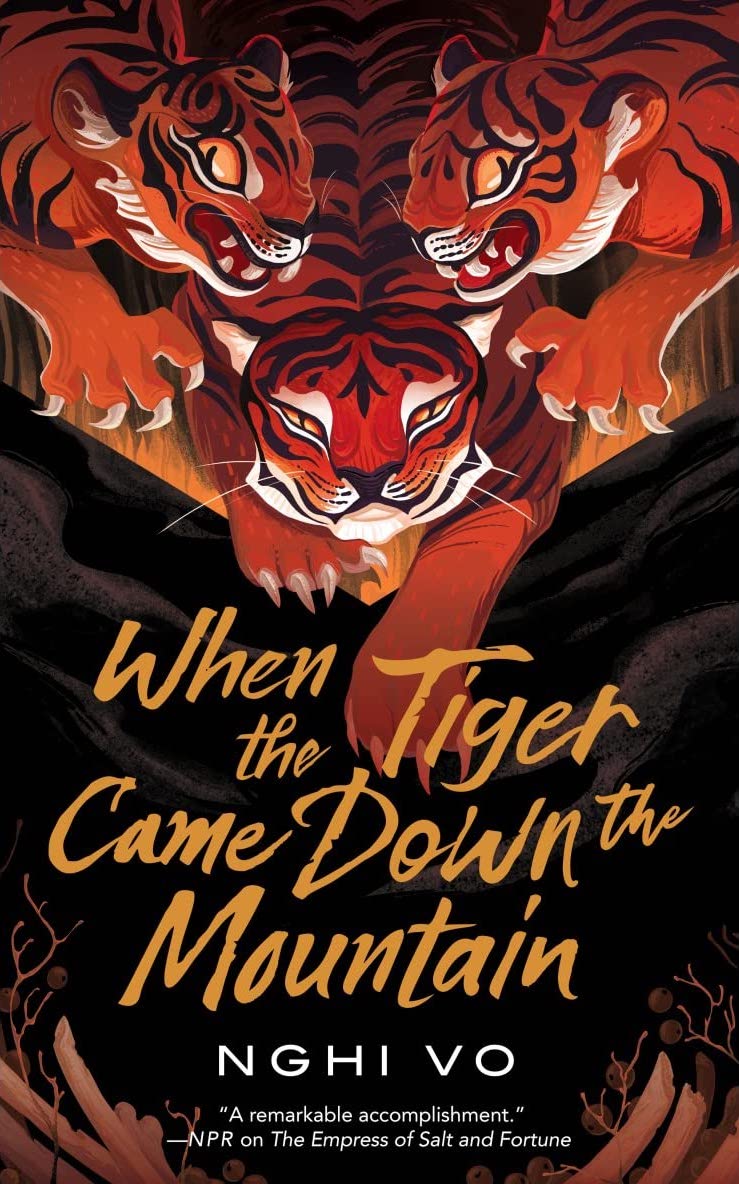Self-defense storytelling is only a little younger than storytelling itself. Shahrazad is the most famous victor of such a contest, but Egil Skallagrimsson did it in Iceland’s famous Egil’s Saga, and there are fairy tales and legends from across the globe that feature getting creative with a narrative to save your neck. And it’s no surprise: a framing narrative that ups the stakes and glorifies both stories and their tellers? Of course it’s popular. But it’s not just self-justification. As we construct narratives to make sense of the world, it’s only natural to explore how stories take us right up to the brink of danger, and also how they keep us alive.

When the Tiger Came Down the Mountain is a story about both the danger and the survival. Six people sit around a fire. Three are humans who want to live out the night; the other three are tigers, eager to fill their bellies. The fire between them is not enough. But the story between them might be.
This book is perfect for anyone whose favorite part of The Hobbit is “Riddles in the Dark.” It’s a verbal duel, here with sparring versions of the same story, a dangerous romance between a human and a tiger. Was Scholar Dieu a perfidious wife, or a vulnerable woman backed into a corner? Was tiger-woman Ho Thi Thao a bully or a lovesick bride? The tigers have one version, the humans another. Both are biased. Is there any truth to be had between the two?
Both versions are compelling, and do an enormous amount of world-building without really seeming to try. Vo is really expert at avoiding the dreaded plot dump for magic and plot, and here she shows us that she’s also skilled at simultaneously creating and undermining her world’s history. The book is less about history than historiography. Who tells, who writes, who keeps and catalogs stories? Chih understands that their role as a chronicler is not to judge but to accept. Their experiences from The Empress of Salt and Fortune certainly taught them that even if their monkish training did not.
I should note that while there are callbacks to the first book, it’s not necessary to have read it beforehand. This novella is complete unto itself—which is a funny thing to say about a novella, but SFF does love its series.
Anyway, the stories within the story actually both have satisfying conclusions, an impressive feat, and one that provides the most satisfying ending to Chih’s framing story as well. Neither the humans nor the tigers can claim that their story is True with a capital T. They can only weigh their own version against the others’, and account for the power differential (or ignore it, as the case may be). But the only real conclusion is Chih’s final word: the written word, which both parties promise will survive the encounter.
We have always told stories to keep the tigers at bay. Vo’s addition to this specific impulse as well as to fantasy in general is most welcome, a refreshing and thoughtful examining of not just our impulse to tell stories but also how those stories both endure and evolve. She invites us to question what we’ve been told—but not stop telling. When the Tiger Came Down the Mountain is about holding plurality in tension, about taking the time to really value a work instead of just devouring it.
